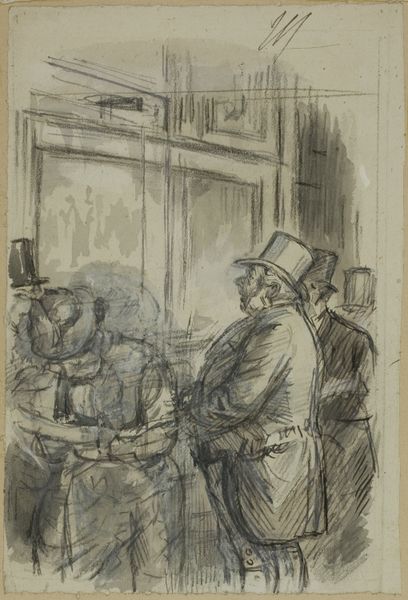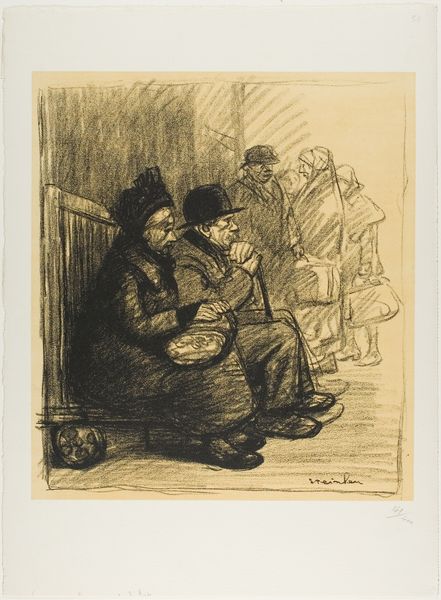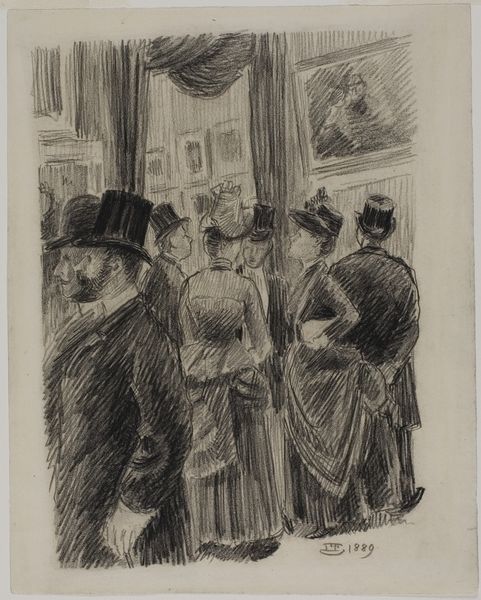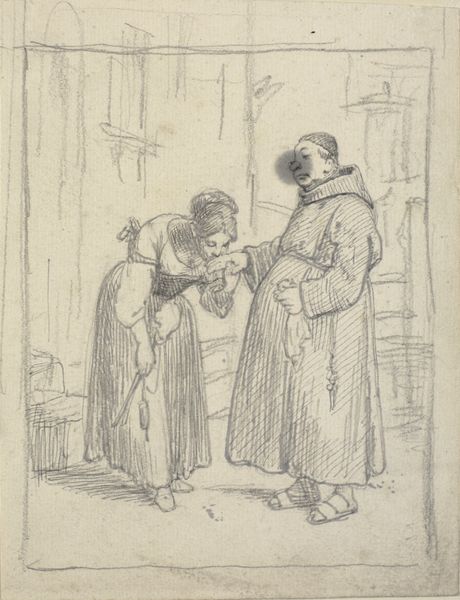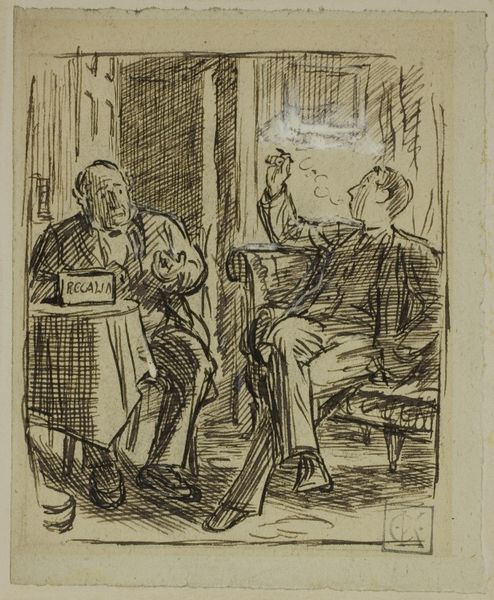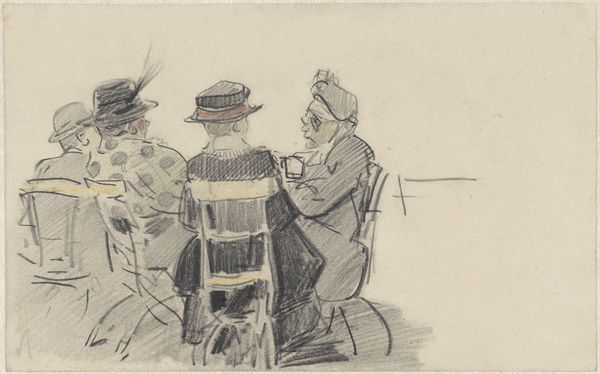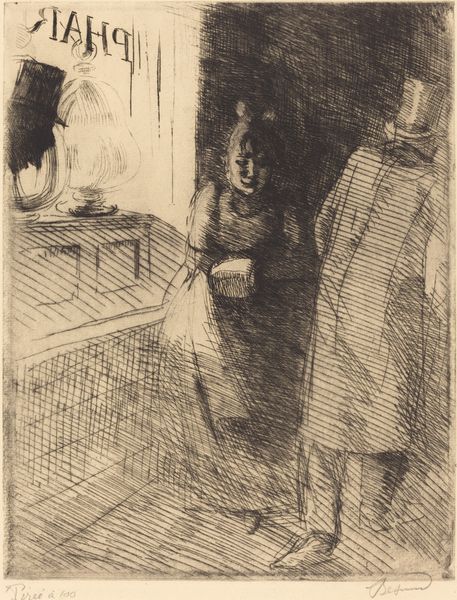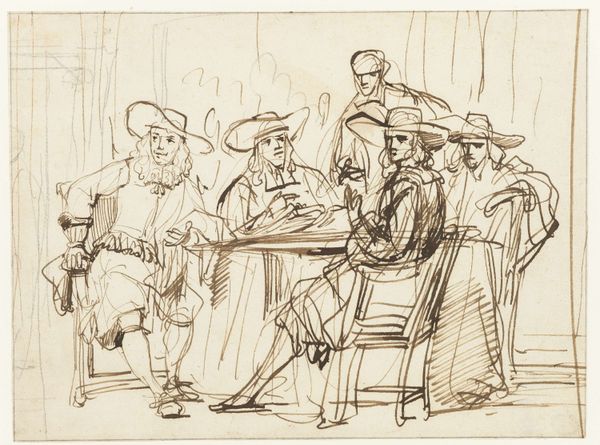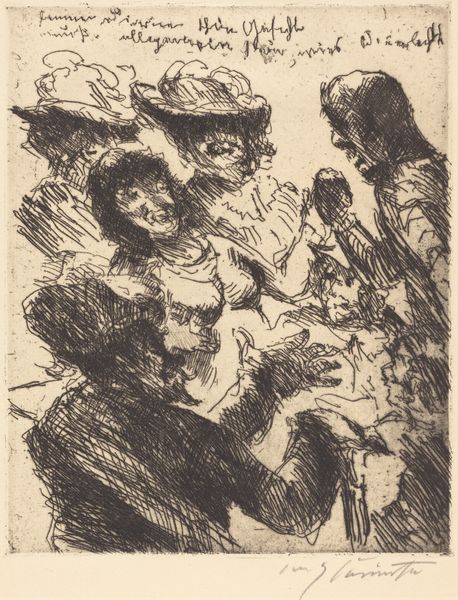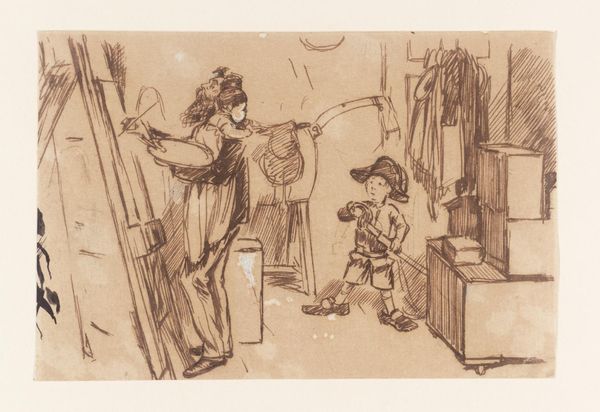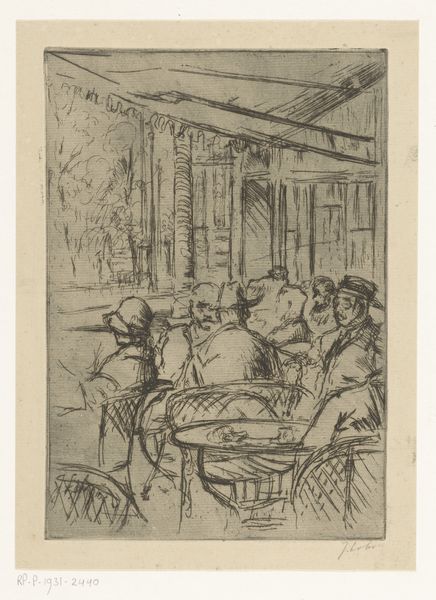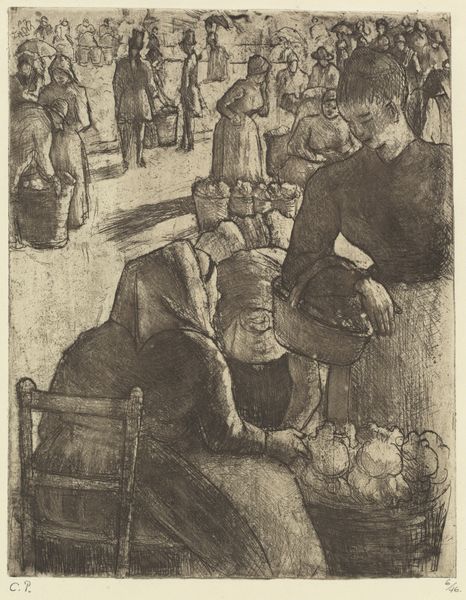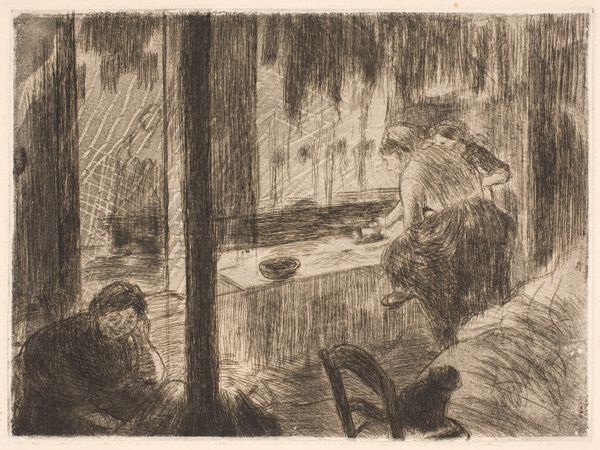
drawing, print, paper, ink, graphite, pen
#
drawing
# print
#
paper
#
ink
#
graphite
#
pen
#
cityscape
#
genre-painting
Dimensions: 190 × 145 mm
Copyright: Public Domain
Editor: Here we have Charles Samuel Keene's 1877 drawing, "The Potato Harvest," rendered in pen, ink, and graphite on paper. The figures are fascinating! What can you tell me about the scene playing out here? Curator: Well, note first that despite its title, it’s clearly not a potato harvest, right? And how are we meant to take that disconnect? The image depicts an interior space, perhaps a shop or a gallery, where well-dressed individuals are gathered. The contrast between the artwork's title and the actual scene encourages us to think critically about artistic representation and the potential for irony. Editor: That’s interesting. It does seem like social commentary… these are not potato harvesters! How does this contribute to our understanding of Victorian society, in your view? Curator: Consider Keene’s role as a Punch illustrator. He was keenly observing and commenting on the social mores and class structures of his time. The elite's detachment from the laboring classes could be the point here. Ask yourself what would Victorian viewers recognize? Perhaps familiar characters, attitudes? Editor: I suppose the humour comes from recognizing the disparity between the idealised rural life and the reality of urban, capitalist society. So the title itself becomes a statement? Curator: Precisely. Keene is using visual language to engage in a dialogue about the role of art and its relationship to the society it reflects. Is he suggesting the 'harvest' is actually taking place in a different sphere, perhaps of wealth and social capital? Editor: It certainly makes you question the role of art in reflecting reality, or obscuring it. Thanks for the fresh perspective! Curator: It also highlights the power of visual storytelling and challenges us to look beyond the surface. A potent reminder that art is always embedded within a specific historical and social context.
Comments
No comments
Be the first to comment and join the conversation on the ultimate creative platform.
